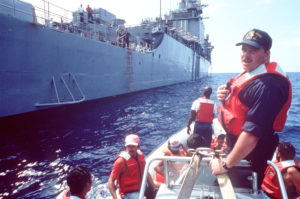Cuban Migrants Denied Asylum for First Time in 60 Years
 On January 12, in one of the last policy moves of his presidency, Barack Obama announced the end of the “wet-foot, dry-foot” policy that has governed U.S. treatment of Cuban migrants. Since the abrupt end of the policy, many Cubans mobilizing to leave or already at sea have been left stranded, unclear about their options under the new policies.
On January 12, in one of the last policy moves of his presidency, Barack Obama announced the end of the “wet-foot, dry-foot” policy that has governed U.S. treatment of Cuban migrants. Since the abrupt end of the policy, many Cubans mobilizing to leave or already at sea have been left stranded, unclear about their options under the new policies.
President Bill Clinton introduced the policy in 1996 as an amendment to the Cuban Adjustment Act of 1966, in which the United States declared that any Cuban having reached U.S. territory would be given political asylum. The Clinton Amendment restricted the accepted Cuban migrants to those who actually set foot on U.S. soil; those intercepted at sea were sent back. The policy was a response to the flood of Cubans fleeing poor economic conditions—typically by boat or raft—after the collapse of the Soviet Union.
Since President Obama’s restoration of diplomatic relations with Cuba in December 2014, many Cubans have feared that the end of the policy was imminent. This caused an influx of Cuban migrants to the United States. The trend has been further exacerbated by the economic disorder in Venezuela. Without discounted Venezuelan oil, Cuba’s economy has suffered.
Stuck without the hope of a better life in America that had existed for the past 60 years, thousands of Cubans fled throughout Latin America. In the last couple of days, Mexico has, for the first time, begun sending Cuban migrants stranded at the U.S. border back to Cuba.
It is a controversial end to a controversial policy that prioritized Cubans over immigrants from other countries. Analysts will now turn their attention to how the White House deals with Cuban migrants under President Donald Trump.
